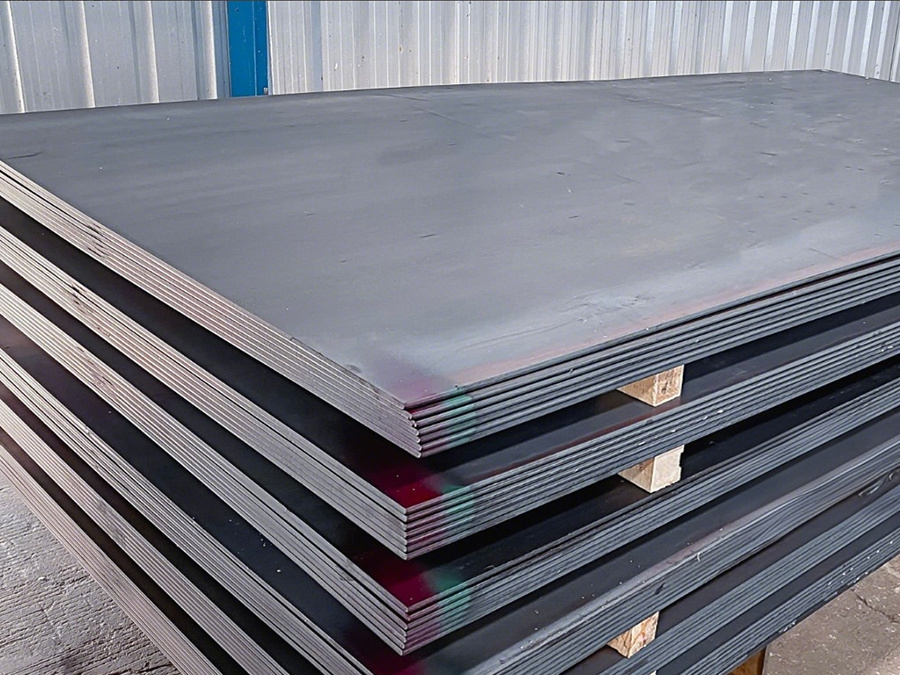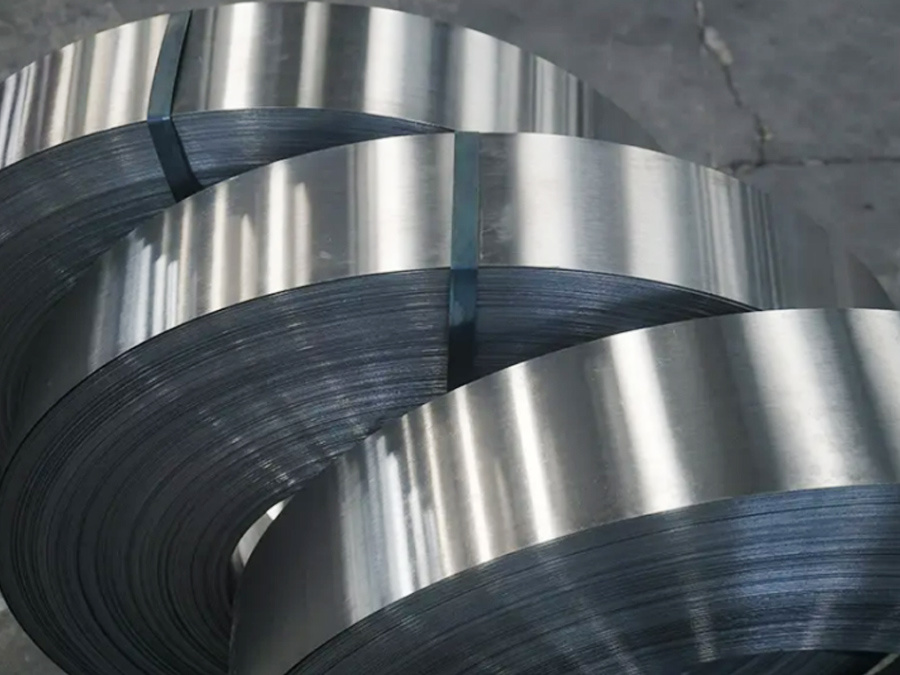Evaluating the Performance of HRB400 Rebar in Various Conditions: A Comprehensive Analysis
2025-08-07
Evaluating the Performance of HRB400 Rebar in Various Conditions
Table of Contents
1. Introduction to HRB400 Rebar
2. Mechanical Properties of HRB400 Rebar
3. Durability and Corrosion Resistance
4. Performance of HRB400 Rebar in Various Environmental Conditions
5. Applications of HRB400 Rebar in the Construction Industry
6. Testing Methods for Evaluating HRB400 Rebar
7. Case Studies
Evaluating the Performance of HRB400 Rebar in Various Conditions
Table of Contents
- 1. Introduction to HRB400 Rebar
- 2. Mechanical Properties of HRB400 Rebar
- 3. Durability and Corrosion Resistance
- 4. Performance of HRB400 Rebar in Various Environmental Conditions
- 5. Applications of HRB400 Rebar in the Construction Industry
- 6. Testing Methods for Evaluating HRB400 Rebar
- 7. Case Studies of HRB400 Rebar Performance
- 8. Conclusion
- 9. Frequently Asked Questions
1. Introduction to HRB400 Rebar
HRB400 rebar is a type of high-strength ribbed steel reinforcement bar widely used in construction. Its designation—HRB400—indicates its yield strength of 400 MPa. This rebar is integral to ensuring the structural integrity of buildings, bridges, and various infrastructure projects. With its unique combination of strength, ductility, and weldability, HRB400 has gained significant recognition in the engineering community.
Understanding the performance of HRB400 rebar under different conditions is critical for engineers and architects as they design safe and efficient structures. This article aims to explore these performance metrics, examining both mechanical properties and real-world application scenarios.
2. Mechanical Properties of HRB400 Rebar
HRB400 rebar exhibits several key mechanical properties that contribute to its effectiveness as a reinforcement material. The primary mechanical properties include:
Tensile Strength
Tensile strength is one of the most critical properties of HRB400 rebar. It defines how much tensile stress the material can withstand before failing. Typically, HRB400 displays a tensile strength of approximately 540 MPa, making it highly suitable for structural applications that require high load-bearing capacity.
Yield Strength
Yield strength refers to the maximum stress that can be applied to the rebar without causing permanent deformation. For HRB400, the yield strength is 400 MPa, enabling it to endure significant forces without compromising its structural integrity.
Elongation
Elongation is the measure of ductility in the material and is expressed as a percentage of the original length. HRB400 typically has an elongation rate of 14% to 16%, indicating that it can deform under stress without breaking. This property is crucial for absorbing energy during seismic events.
Modulus of Elasticity
The modulus of elasticity, or stiffness, of HRB400 rebar is about 200 GPa. This high modulus ensures that the rebar can effectively resist deformation under load, maintaining the overall stability of the structure.
3. Durability and Corrosion Resistance
The durability of HRB400 rebar is paramount, especially in environments prone to corrosion. The structural integrity of buildings can significantly degrade if the reinforcement deteriorates due to environmental factors.
Corrosion Resistance
HRB400 rebar is usually coated with various protective layers to enhance its resistance to corrosion. Applications of epoxy coatings or galvanized finishes can further prolong its lifespan, especially in coastal areas or regions with high humidity.
Resistance to Fatigue
Fatigue resistance is another essential factor in assessing the durability of HRB400 rebar. Fatigue failure may occur over time when subjected to repeated loading cycles. Understanding this property helps engineers design structures that can withstand dynamic loads, such as those experienced in bridges.
4. Performance of HRB400 Rebar in Various Environmental Conditions
Understanding how HRB400 performs in various environmental conditions is crucial. Several factors can affect its performance, including temperature, humidity, and exposure to chemicals.
High-Temperature Performance
At elevated temperatures, the mechanical properties of HRB400 may change. Studies have shown that while yield strength may decrease at high temperatures, HRB400 maintains sufficient performance levels for most applications. This characteristic is vital for structures exposed to fire hazards.
Low-Temperature Performance
Conversely, HRB400 has demonstrated excellent performance in low-temperature environments. Its ductility allows it to maintain structural integrity even in colder climates, making it suitable for construction projects in regions with harsh winter conditions.
Performance in Aggressive Chemical Environments
HRB400's exposure to aggressive chemicals, such as chlorides or sulfates, can significantly impact its performance. Projects in industrial areas or near saltwater must consider these factors when selecting reinforcement materials. Protective coatings are often employed to mitigate these risks.
5. Applications of HRB400 Rebar in the Construction Industry
HRB400 rebar is used extensively across various sectors of the construction industry due to its superior mechanical properties and performance characteristics.
High-Rise Buildings
In high-rise construction, HRB400 provides the necessary strength to withstand the gravitational and lateral loads exerted on tall structures. Its high yield strength allows for lighter designs without compromising safety.
Bridges and Infrastructure
The durability and fatigue resistance of HRB400 make it an ideal choice for bridge construction and other infrastructure projects. Engineers favor this rebar to ensure safety and longevity.
Foundations and Retaining Walls
In foundations and retaining walls, HRB400's tensile strength and ductility are critical. These structures require robust reinforcement to withstand soil pressure and other forces.
6. Testing Methods for Evaluating HRB400 Rebar
To ensure the optimal performance of HRB400 rebar, various testing methods are employed to evaluate its mechanical properties and durability.
Tensile Testing
Tensile testing involves applying a controlled tensile load to the rebar until failure occurs. This test helps determine the tensile strength, yield strength, and elongation of the material.
Corrosion Testing
Corrosion testing evaluates the rebar's resistance to corrosive environments. Common methods include salt spray tests and electrochemical tests, which simulate environmental conditions that may accelerate corrosion.
Fatigue Testing
Fatigue testing assesses how HRB400 behaves under cyclical loading conditions. This information is crucial for applications that experience repeated stress over time.
7. Case Studies of HRB400 Rebar Performance
Real-world examples provide valuable insights into the performance of HRB400 rebar in various conditions.
Case Study 1: Urban High-Rise Project
In a recent urban high-rise project, HRB400 rebar was used extensively in the structural frame. The project faced challenges due to high wind loads and seismic activity. HRB400's performance ensured the building's stability, demonstrating its capabilities in demanding conditions.
Case Study 2: Coastal Infrastructure Development
A coastal infrastructure project employed HRB400 rebar to combat the harsh marine environment. The use of epoxy-coated rebar significantly enhanced corrosion resistance, leading to a successful long-term performance, with minimal maintenance required.
8. Conclusion
Evaluating the performance of HRB400 rebar in various conditions reveals its strength as a vital component in modern construction. Its mechanical properties, durability, and ability to withstand different environmental challenges make it an ideal choice for engineers and architects. As we continue to explore advanced construction techniques and materials, HRB400 rebar will remain a cornerstone in the quest for safer and more efficient structures.
9. Frequently Asked Questions
1. What is HRB400 rebar?
HRB400 rebar is a high-strength ribbed steel reinforcement bar characterized by a yield strength of 400 MPa, widely used in construction for its strength and durability.
2. What are the primary mechanical properties of HRB400 rebar?
The primary mechanical properties include tensile strength (approx. 540 MPa), yield strength (400 MPa), elongation (14% to 16%), and a modulus of elasticity of about 200 GPa.
3. How does HRB400 perform in corrosive environments?
HRB400 can be treated with protective coatings like epoxy or galvanized finishes to enhance its resistance to corrosion, particularly in aggressive environments.
4. Is HRB400 suitable for high-temperature applications?
While HRB400 may experience a decrease in yield strength at elevated temperatures, it can still perform adequately for most structural applications.
5. What are common testing methods for HRB400 rebar?
Common testing methods include tensile testing, corrosion testing (such as salt spray tests), and fatigue testing to evaluate the rebar's performance under various conditions.
Key words:
RELATED INFORMATION
Evaluating the Performance of HRB400 Rebar in Various Conditions: A Comprehensive Analysis
Evaluating the Performance of HRB400 Rebar in Various Conditions
Table of Contents
1. Introduction to HRB400 Rebar
2. Mechanical Properties of HRB400 Rebar
3. Durability and Corrosion Resistance
4. Performance of HRB400 Rebar in Various Environmental Conditions
5. Applications of HRB400 Rebar in the Construction Industry
6. Testing Methods for Evaluating HRB400 Rebar
7. Case Studies
2025-08-07
Understanding Galvalume Steel Coil/Plate: A Comprehensive Overview
Galvalume steel coil/plate is an innovative product that combines the advantages of both zinc and aluminum in the coating process, resulting in a highly durable and corrosion-resistant metal. This material is primarily composed of a base steel substrate that is coated with a mixture of aluminum and zinc, typically in a ratio of 55% aluminum to 43.4% zinc, with the remaining percentage being silico
2025-08-04
Understanding PPGI Coils: The Versatile Material for Modern Applications
PPGI coils are made by coating a base iron or steel substrate with a layer of zinc for corrosion resistance, followed by a layer of paint. This process not only enhances durability but also allows for a wide range of color options and finishes, making PPGI coils an attractive option for many applications. The combination of a galvanized surface and a painted layer provides effective protection aga
2025-07-29













